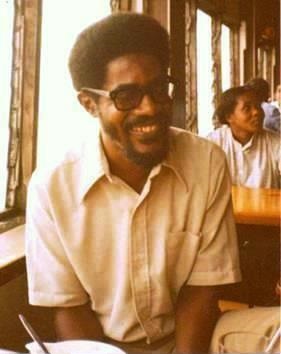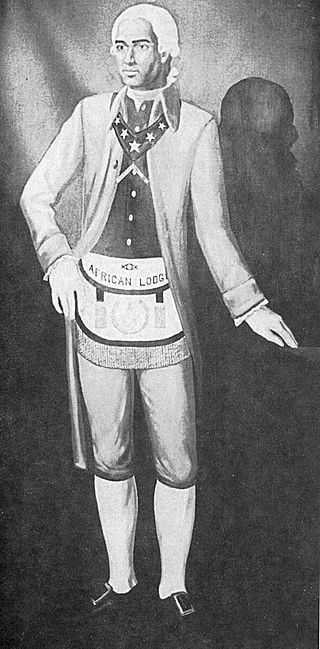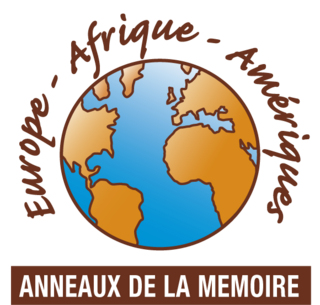
Booker Taliaferro Washington was an American educator, author, orator, and adviser to several presidents of the United States. Between 1890 and 1915, Washington was the dominant leader in the African-American community and of the contemporary black elite. Washington was from the last generation of black American leaders born into slavery and became the leading voice of the former slaves and their descendants. They were newly oppressed in the South by disenfranchisement and the Jim Crow discriminatory laws enacted in the post-Reconstruction Southern states in the late 19th and early 20th centuries.

The Atlantic slave trade, transatlantic slave trade, or Euro-American slave trade involved the transportation by slave traders of enslaved African people, mainly to the Americas. The slave trade regularly used the triangular trade route and its Middle Passage, and existed from the 16th to the 19th centuries. The vast majority of those who were transported in the transatlantic slave trade were people from Central and West Africa that had been sold by other West Africans to Western European slave traders, while others had been captured directly by the slave traders in coastal raids; Europeans gathered and imprisoned the enslaved at forts on the African coast and then brought them to the Americas. Except for the Portuguese, European slave traders generally did not participate in the raids because life expectancy for Europeans in sub-Saharan Africa was less than one year during the period of the slave trade. The colonial South Atlantic and Caribbean economies were particularly dependent on labour for the production of sugarcane and other commodities. This was viewed as crucial by those Western European states which, in the late 17th and 18th centuries, were vying with one another to create overseas empires.

Henry Highland Garnet was an American abolitionist, minister, educator and orator. Having escaped as a child from slavery in Maryland with his family, he grew up in New York City. He was educated at the African Free School and other institutions, and became an advocate of militant abolitionism. He became a minister and based his drive for abolitionism in religion.

Walter Anthony Rodney was a Guyanese historian, political activist and academic. His notable works include How Europe Underdeveloped Africa, first published in 1972. Rodney was assassinated in Georgetown, Guyana, in 1980.

Prince Hall was an American abolitionist and leader in the free black community in Boston. He founded Prince Hall Freemasonry and lobbied for education rights for African American children. He was also active in the back-to-Africa movement.

African Burial Ground National Monument is a monument at Duane Street and African Burial Ground Way in the Civic Center section of Lower Manhattan, New York City. Its main building is the Ted Weiss Federal Building at 290 Broadway. The site contains the remains of more than 419 Africans buried during the late 17th and 18th centuries in a portion of what was the largest colonial-era cemetery for people of African descent, some free, most enslaved. Historians estimate there may have been as many as 10,000–20,000 burials in what was called the Negroes Burial Ground in the 18th century. The five to six acre site's excavation and study was called "the most important historic urban archaeological project in the United States." The Burial Ground site is New York's earliest known African-American cemetery; studies show an estimated 15,000 African American people were buried here.

Theodore Roosevelt High School, originally Roosevelt High School, the third public high school to open in the Bronx, New York, operated from 1918 until its permanent closure in 2006. Shutting down incrementally since 2002, this large high school, initially enrolling about 4 000 students, yearly dwindled, newly sharing its 1928 building with new, small public high schools—all pooling students for major, extracurricular activities like athletics and JROTC—a reorganization renaming the building Theodore Roosevelt Educational Campus, still open after the historic, namesake high school ceased in 2006. At its November 1918 opening, Roosevelt High School operated in the building of school PS 31.
Education in Stamford, Connecticut takes place in both public and private schools and college and university campuses.

Laura Smith Haviland was an American abolitionist, suffragette, and social reformer. She was a Quaker and an important figure in the history of the Underground Railroad.

The back-to-Africa movement was based on the widespread belief among some European Americans in the 18th and 19th century United States that African Americans would want to return to the continent of Africa. In general, the political movement was an overwhelming failure; very few former slaves wanted to move to Africa. The small number of freed slaves who did settle in Africa—some under duress—initially faced brutal conditions, due to diseases to which they no longer had biological resistance. As the failure became known in the United States in the 1820s, it spawned and energized the abolitionist movement. In the 20th century, the Jamaican political activist and black nationalist Marcus Garvey, members of the Rastafari movement, and other African Americans supported the concept, but few actually left the United States.
Oppositional culture, also known as the "blocked opportunities framework" or the "caste theory of education", is a term most commonly used in studying the sociology of education to explain racial disparities in educational achievement, particularly between white and black Americans. However, the term refers to any subculture's rejection of conformity to prevailing norms and values, not just nonconformity within the educational system. Thus many criminal gangs and religious cults could also be considered oppositional cultures.

Prince Among Slaves is a 2006 historical drama directed, written and produced by Andrea Kalin and narrated by Mos Def made for PBS by Unity Productions Foundation. The film, made in association with Spark Media and Duke Media, is based on the story of Abdul Rahman Ibrahima Sori, a prince from Guinea who was made a slave in the United States and freed 40 years later.

The Jay Heritage Center (JHC) is a 501(c)(3) not-for-profit organization incorporated in 1990 and chartered by the New York State Board of Regents to act as stewards of the 23-acre Jay Estate, the National Historic Landmark home of American Founding Father John Jay. Jay's ancestral property in Rye, New York is considered the centerpiece of the Boston Post Road Historic District.

Sarah J. Tompkins Garnet was an American educator and suffragist from New York City who was a pioneer an influential African-American female school principal in the New York City public school system.

The organization Les Anneaux de la mémoire is an association under French law. Its objective is to make better known the history of the slave trade and slavery and their current consequences, in the perspective of making an experiment among many others, of work of memory whose theory remains to be done, in order to promote exchanges, balanced and equitable, between the societies of Africa, America and Europe. The Rings of Memory develop and implement exhibitions, publications, cultural actions at local and international level. Shared values and the search for scientific validity in its approach to historical, social and economic facts underlie all the association’s activities today. They are at the origin of multiple cultural actions, international conferences and symposia, publications, educational activities and numerous cultural and tourist development projects, in the framework of actions built with interlocutors from the three continents.

The Slave Route Project is a UNESCO initiative that was officially launched in 1994 in Ouidah, Benin. It is rooted in the mandate of the organization, which believes that ignorance or concealment of major historical events constitutes an obstacle to mutual understanding, reconciliation and cooperation among peoples. The project breaks the silence surrounding the slave trade and slavery that has affected all continents and caused great upheavals that have shaped our modern societies. In studying the causes, the modalities and the consequences of slavery and the slave trade, the project seeks to enhance the understanding of diverse histories and heritages stemming from this global tragedy.

The African American Museum of Iowa (AAMI), nestled along the Cedar River near downtown Cedar Rapids, Iowa, United States, has been carrying out its mission “To preserve, publicize, and educate the public on the African American heritage and culture of Iowa” since its incorporation as a 501(c)(3) organization in 1994. It has become the leading educational resource on African American history in Iowa and has two on-site exhibits: a permanent exhibit called Endless Possibilities, and the 2017 temporary exhibit – If Objects Could Talk. Additionally, the AAMI has several "traveling exhibits" that are available free of charge for use by schools, libraries, businesses, etc.
Southern Maryland is the home of the first person of African descent to be elected to and serve in a legislature in America. His name was Mathias de Sousa and he was one of the original colonists to arrive in 1634. Southern Maryland is also the place where Josiah Henson was enslaved, and the place of brutality he wrote about in his later autobiography, which became the basis for Harriet Beecher Stowe's "Uncle Tom's Cabin". A descendant of Josiah Henson, Mathew Henson, was also from Southern Maryland and he was one of the first people to reach the North Pole along with Admiral Peary in 1909. There are so many more stories than these, both of triumph and of pain, of subjugation and of perseverance. Come walk the paths of these remarkable people and help us all to remember them.
Rodney Leon is an American architect. He is the founder of Rodney Leon Architect. He is the designer of the monument "The Ark of Return", and the memorial for the New York City African Burial Ground National Monument. He specializes in urban planning projects in the United States of America, and abroad, projects with cultural, residential, and religious. He is a member of The Haitian Roundtable (HRT). It is an organization of the Haitian-American professionals committed to civic engagement as well as philanthropic endeavors to benefit Haiti. It was started in 2008.
The Assin Manso Ancestral Slave River [also called Nnonkonsuo or Donkor Nsuo (singular)] was one of the slave markets for gathering indigenes during the trans-Atlantic slave trade. It is located in the Central Region of Ghana, forty (40) kilometers along the Cape Coast-Kumasi highway.















